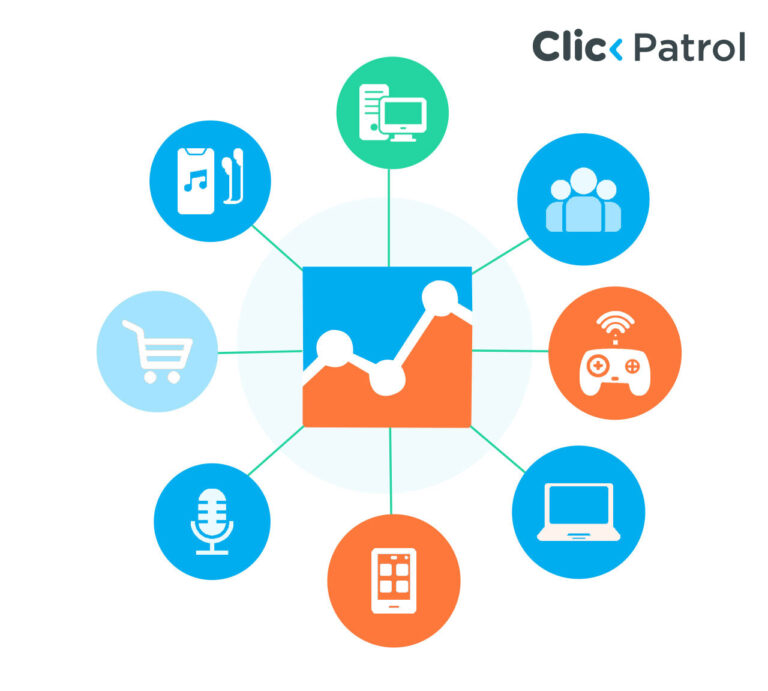While tracking templates are commonly used in Google Ads, other advertising platforms may have similar features. However, the implementation details can vary. If you’re working with platforms like Facebook Ads or LinkedIn Ads, explore their documentation to find equivalent methods for tracking and optimizing your campaigns.
How to Use Tracking Templates in Google Ads
Abisola Tanzako | Jul 04, 2024

Table of Contents
- Understanding tracking templates in Google Ads
- Why use tracking templates?
- Benefits of tracking templates in Google Ads
- How to add tracking templates in Google Ads
- What to consider when tracking templates in Google Ads
- Best practices for tracking templates
- Gain deeper insights with tracking templates
As companies strive to reach their target audiences effectively, Google Ads stands out as a powerful platform, offering unique reach and targeting capabilities. Google Ads’ tracking templates play a crucial role here, serving as a vital bridge between advertising efforts and meaningful data insights.
Tracking templates are a sophisticated feature that empowers advertisers to append specific parameters to their ad URLs, offering a range of valuable information about their campaigns.
The tracking template’s versatility and customization options also enable advertisers to create tailored solutions for various marketing campaigns and objectives. This article will explore tracking templates in Google Ads and discuss their importance. We will also discuss key considerations when setting them up and offer guidance on effectively utilizing them to maximize your advertising ROI.
Understanding tracking templates in Google Ads
A tracking template in Google Ads is a URL parameter added to your Google Ads account settings that allows you to track specific information about your ad URLs. Tracking templates will enable you to customize and enhance the URLs associated with your ads. At their core, tracking templates are predefined structures that automatically append specific parameters to the final URL when clicked on by an ad user.
These parameters help collect data on user behavior, conversions, campaign ID, ad group ID, keyword, match type, other custom variables the advertiser defines, and overall campaign performance. Using tracking templates, advertisers gain insights into which campaigns, keywords, and custom parameters drive results, enabling accurate data collection and streamlined analysis in tools like Google Analytics.
Why use tracking templates?
The primary purpose of tracking templates is to capture and transmit crucial data about the ad interaction and the user’s journey. By incorporating tracking template parameters into the URL, advertisers can gain more insight into their campaign performance, user behavior, and conversion paths.
This information is then typically processed by analytics tools, enabling advertisers to track the effectiveness of their ads more accurately and make data-driven decisions to optimize their campaigns. Here is an insight into why advertisers use tracking templates:
- Data-driven decision-making: Tracking templates enable advertisers to accurately measure the effectiveness of their ads. By appending additional information to the URL, such as campaign IDs, ad group IDs, keywords, and device types, advertisers gain insights into which specific elements contribute to successful clicks.
- Granular attribution: With tracking templates, advertisers can attribute individual clicks to specific campaigns, ad groups, and keywords, allowing for precise measurement and optimization. This granularity enables them to understand which components of their advertising efforts drive the best results. For instance, if an advertiser sells specialty skincare products, they can track which campaign (e.g., moisturizers), ad group, or keyword led to a user’s click.
- Audience insights: Tracking templates provide valuable insights into user behavior. Advertisers can identify patterns by analyzing data from different devices (mobile vs. desktop) and various targeting tactics. For example, they might discover that specific audience segments generate higher click volumes. With this knowledge, advertisers can refine their targeting strategies and tailor their messaging more effectively.
- Third-party click tracking: Sophisticated advertisers often use third-party or proprietary tracking systems. Tracking templates allow seamless integration with these tools. Advertisers can ensure compatibility with their preferred tracking solutions by customizing the template.
- Efficient campaign management: Tracking templates streamlines the process of managing large-scale campaigns. Advertisers can easily track performance metrics across multiple ads, ad groups, and keywords without needing to manually adjust. This efficiency saves time and ensures the collection of accurate data.
- Enhanced reporting and optimization: Detailed tracking data facilitates better reporting and campaign optimization. Advertisers can identify underperforming elements, adjust bids, and refine targeting based on real-time insights. This approach leads to effective ad delivery and improved ROI.
Benefits of tracking templates in Google Ads
Tracking templates in Google Ads offers significant benefits for advertisers. Let’s explore some of its benefits:
- Accurate tracking and measurement: A tracking template enables you to precisely track and measure the performance of your ads. By appending URL parameters, you can identify which campaign, ad group, keyword, and device triggered a specific ad click.
- Data-driven decision-making: A tracking template allows you to make informed decisions about your ad campaigns. Analyzing the data from tracking templates helps you optimize your strategies based on real insights.
- Improved ROI: Accurate tracking enables a better understanding of conversion rates, allowing you to allocate your budget effectively and enhance your return on investment (ROI).
- Enhanced campaign optimization: Tracking templates enable insights into ad performance. You can adjust bids, targeting, and ad copy based on specific parameters, leading to more effective campaigns.
- Better understanding of user behavior: Tracking individual clicks gives you insights into user behavior. You can then understand which keywords resonate with your audience and tailor your approach accordingly.
- Consistency: Templates ensure consistent tracking across all your campaigns. You will get all crucial data points, maintaining accuracy and reliability.
- Easy analysis: Templates facilitate the analysis and comparison of data. Identify trends, spot inefficiencies, and fine-tune your strategies.
- Time savings: Predefined structures in templates save time during setup. You won’t need to manually add tracking parameters for each ad.
- Customizable parameters: Tracking templates allow flexibility. You can include specific information like match type, creative ID, or custom variables.
- Device-specific insights: Track performance separately for mobile, desktop, and tablet devices. Optimize bids and messaging accordingly.
- Keyword-level tracking: Understand which keywords drive clicks and conversions. Adjust bids or pause underperforming keywords.
- Campaign-level insights: Templates help you attribute performance to specific campaigns. Measure success and allocate resources effectively.
How to add tracking templates in Google Ads
Advertisers can navigate to their campaign or ad group settings to create a tracking template in Google Ads and customize the tracking template field with the desired parameters. Google Ads offers dynamic tracking parameters like campaign, IpUrl, keyword, network, and ignore.
These parameters can include static and dynamic values that Google Ads automatically populate during ad clicks, providing a comprehensive view of user interactions.
Tracking templates can be set at various levels within a Google Ads account: account, campaign, ad group, or even individual ad or keyword levels. Here’s a quick guide to setting up a tracking template in Google Ads.
- Sign in to your Google Ads account and navigate to the “Campaigns” section.
- Click on the campaign for which you want to set up tracking.
- In the left-hand sidebar, click on “Settings.”
- Scroll down to the “Tracking template” section.
- Select “Customize” next to the tracking template field.
- In the “Tracking template” field, you can enter the desired parameters using Google Ads’ dynamic tracking parameters.
- Apply to campaigns or ad groups:
- Assign the tracking template at the campaign or ad group level.
- Ensure consistency across all ads within the same group.
What to consider when tracking templates in Google Ads
Advertisers should consider several key factors when implementing tracking templates in Google Ads to ensure effective campaign monitoring and optimization. Here’s a comprehensive list of considerations:
- Hierarchy and inheritance: Understand the hierarchy of tracking template implementation within Google Ads. Lower-level templates will override higher-level ones, allowing for granular control and specificity in tracking.
- URL structure: Ensure your tracking template is compatible with your website’s URL structure. Consider any redirects or parameters already used on your landing pages to avoid conflicts or broken links.
- Dynamic Parameters: Effectively Utilize Google Ads’ Dynamic Parameters. These include campaign ID, ad group ID, creative, keyword, match type, and device, among others. Each parameter provides specific insights into ad performance and user behavior.
- Custom parameters: Implement custom parameters to track additional information relevant to your business. These can include product IDs, promotion codes, or any other custom variables you want to track.
- Third-party integration: If you use third-party analytics or conversion tracking tools, ensure your tracking template is compatible with these systems. This may involve adding specific parameters or modifying the template structure.
- Character limits: Be aware of Google Ads’ character limits for tracking templates. The final URL, including all parameters, must be no longer than 2,048 characters.
- ValueTrack parameters: Leverage ValueTrack parameters to gain insights into specific aspects of your ads, such as ad position, network, or device type.
- Testing: Thoroughly test your tracking templates before implementing them fully. Use Google’s preview tool and conduct live tests to ensure all parameters are passed correctly and landing pages load as expected.
- HTTPS compliance: Ensure your tracking template and all redirects use HTTPS to maintain security and comply with Google Ads policies.
- Cross-domain tracking: If your ads direct users across multiple domains, implement appropriate cross-domain tracking to maintain continuity in your analytics.
- Performance impact: Consider the potential impact on ad performance. Complex tracking templates may increase load times, which can affect Quality Scores or user experience.
- Parallel tracking: Implement parallel tracking to improve user page load times. This allows the tracking URL to load separately from the landing page.
- Mobile considerations: Optimize your tracking for mobile devices, taking into account factors such as app deep linking or mobile-specific parameters.
Best practices for tracking templates
Here are some best practices for tracking templates in Google Ads:
- Use a consistent naming convention: Implement a clear and consistent naming system for your tracking parameters. This helps maintain organization and makes analyzing data across campaigns and ad groups easier.
- Implement hierarchical structure: Use Google Ads’ hierarchical structure to apply tracking templates efficiently. Set general templates at higher levels (account or campaign) and use more specific templates at lower levels (ad group or keyword) for granular tracking.
- Include custom parameters: Incorporate custom parameters relevant to your business goals. This might include product IDs, promotional codes, or other unique identifiers that help segment and analyze your data more effectively.
- Regularly test and validate: Conduct frequent tests to ensure your tracking templates function correctly. Use Google’s preview tool and perform live tests to verify that all parameters are passed accurately and landing pages are loading as expected.
- Maintain HTTPS compliance: Ensure all components of your tracking template, including any redirects, use HTTPS. This maintains security and adheres to Google Ads policies.
- Optimize for speed: Keep your tracking templates as streamlined as possible to minimize the impact on page load times. Implement parallel tracking to improve the user experience and boost Quality Scores.
- Document and review: Maintain detailed documentation of your tracking template structure and regularly review its effectiveness to ensure optimal performance. This practice helps you troubleshoot issues and continuously optimize your tracking strategy.
Gain deeper insights with tracking templates
Tracking templates in Google Ads is a powerful tool that empowers advertisers to gain deeper insights into their campaigns and user behavior. By customizing tracking templates and leveraging dynamic parameters, advertisers can unlock valuable data that helps them optimize their campaigns for improved performance, higher ROI, and informed decision-making.
Whether you are a seasoned advertiser or just starting, incorporating tracking templates into your Google Ads strategy is essential for maximizing your advertising impact.
Frequently Asked Questions
-
Can tracking templates be used with other advertising platforms?
-
Are there any risks associated with using tracking templates?
While tracking templates offer benefits such as customization, time savings, and centralized operations, there are also potential risks. These include overlooking unique project requirements, misaligning team workflows, and dependency on predefined structures. Balancing the advantages with these considerations is essential to making informed decisions. For example, ensure that your landing pages and website are secure and compliant with data privacy regulations, such as GDPR and CCPA.
-
Can tracking templates be used for tracking offline conversions?
Yes, tracking templates can be used to track offline conversions. You can use the Google Click ID (GCLID) method to track offline conversions in Google Ads. First, ensure that auto-tagging is enabled in your Google Ads account. Then, make code changes to your web pages to capture the GCLID parameter appended to the URL when users click your ads. Once set up, you can import your conversions into Google Ads using the appropriate template for “Conversions from clicks (using Google Click ID).”






